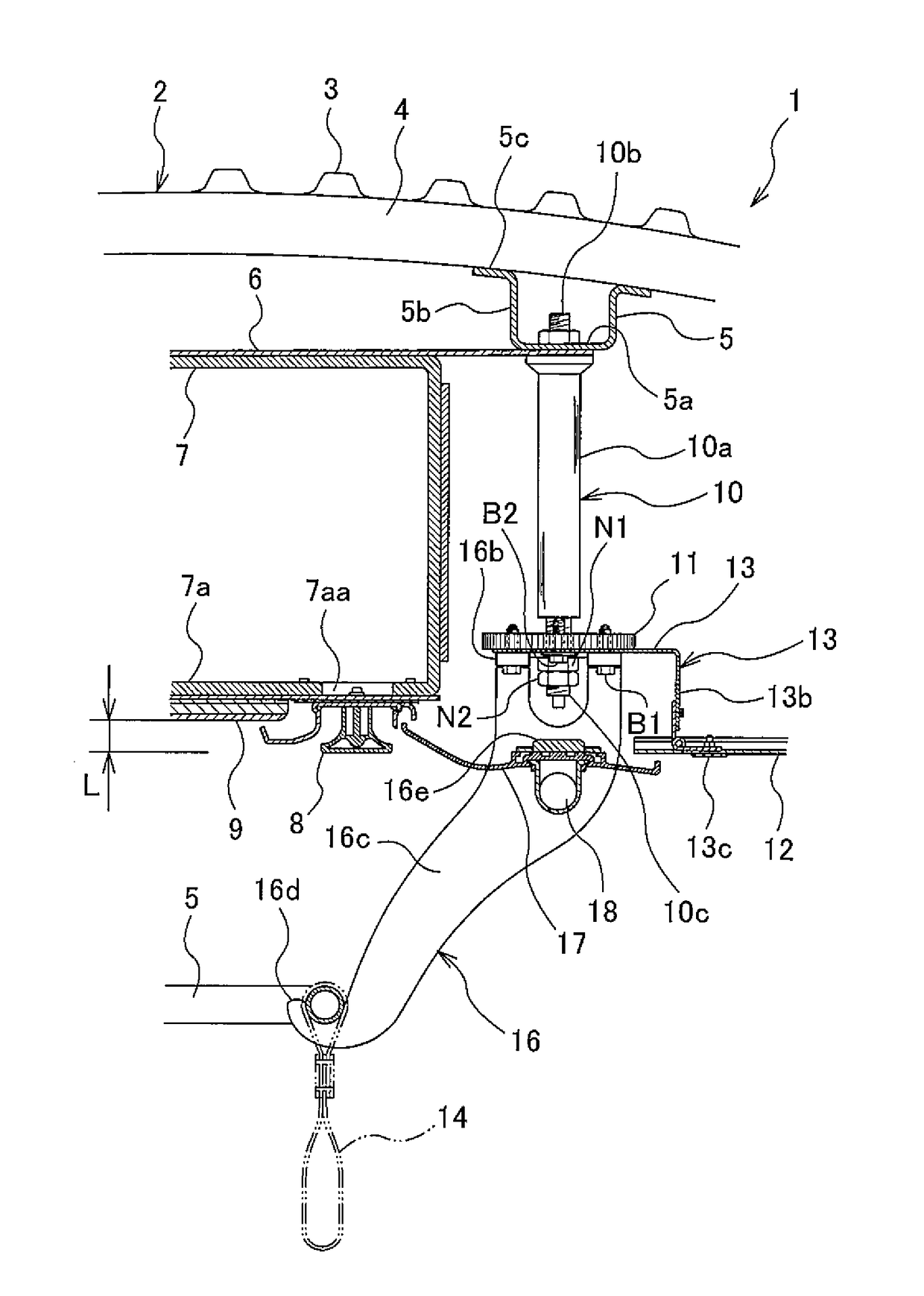Carbody of railcar
a railcar and car body technology, applied in the direction of railway roofs, railway bodies, underframes, etc., can solve the problem that the appearance cannot be kept, and achieve the effect of obtaining the strength of the carbody and stably determining the vertical distan
- Summary
- Abstract
- Description
- Claims
- Application Information
AI Technical Summary
Benefits of technology
Problems solved by technology
Method used
Image
Examples
embodiment 1
[0018]FIG. 1A is a major component sectional view showing a carbody 1 of a railcar according to Embodiment 1. FIG. 1B is an enlarged perspective view showing a part of the carbody 1 of FIG. 1A when viewed from below. As shown in FIGS. 1A and 1B, the carbody 1 of the railcar of the present embodiment includes a roof bodyshell 2. The roof bodyshell 2 includes a circular-arc corrugated plate 3 and a plurality of carlines 4. The corrugated plate 3 is convex upward when viewed from a railcar longitudinal direction (hereinafter may also be referred to as a rail direction or a forward / rearward direction). The plurality of carlines 4 are fixed to a lower surface of the corrugated plate 3, extends in a railcar width direction (hereinafter may also be referred to as a sleeper direction or a crosswise direction), and are arranged at intervals in the railcar longitudinal direction. A first reinforcing member 5 extending in the railcar longitudinal direction is fixed to lower surfaces of the car...
embodiment 2
[0033]FIG. 5 is a major component sectional view showing a carbody 101 of the railcar according to Embodiment 2. FIG. 6 is a plan view showing major components of the carbody 101 shown in FIG. 5. As shown in FIGS. 5 and 6, a receiving tray member 120 is fixed to the roof bodyshell 2. The receiving tray member 120 includes: a recess 120a that is open upward; and a flange portion 120b horizontally projecting from an upper end edge of the recess 120a. The recess 120a is rectangular in plan view. A rectangular nut N3 (rotating body) is accommodated in the recess 120a. The nut N3 has such a size as to interfere with side surfaces of the recess 120a and therefore be not rotatable by a predetermined angle or more. A hole 120aa that is smaller than the nut N3 is formed at a bottom wall portion of the recess 120a, so that the nut N3 does not fall off.
[0034]A supporting rod 110 having an axis extending in the vertical direction is inserted through the hole 120aa of the receiving tray member 1...
embodiment 3
[0040]FIG. 7 is a major component sectional view showing a carbody 201 of a railcar according to Embodiment 3. As shown in FIG. 7, the first reinforcing member 5 extending in the railcar longitudinal direction is fixed to the lower surface of the roof bodyshell 2, and a supporting rod 210 having an axis extending in the vertical direction is fixed to the first reinforcing member 5. The supporting rod 210 includes: a columnar rod main body portion 210a; a flange portion 210b projecting from an upper end of the rod main body portion 210a in the horizontal direction; and a lower end portion 210c provided at a lower side of the rod main body portion 210a. The lower end portion 210c is an external thread portion that is smaller in diameter than the rod main body portion 210a and projecting downward from the rod main body portion 210a.
[0041]The flange portion 210b of the supporting rod 210 is fixed to the first reinforcing member 5 by fastening members B3 (for example, bolts). The first ...
PUM
 Login to View More
Login to View More Abstract
Description
Claims
Application Information
 Login to View More
Login to View More - R&D
- Intellectual Property
- Life Sciences
- Materials
- Tech Scout
- Unparalleled Data Quality
- Higher Quality Content
- 60% Fewer Hallucinations
Browse by: Latest US Patents, China's latest patents, Technical Efficacy Thesaurus, Application Domain, Technology Topic, Popular Technical Reports.
© 2025 PatSnap. All rights reserved.Legal|Privacy policy|Modern Slavery Act Transparency Statement|Sitemap|About US| Contact US: help@patsnap.com



